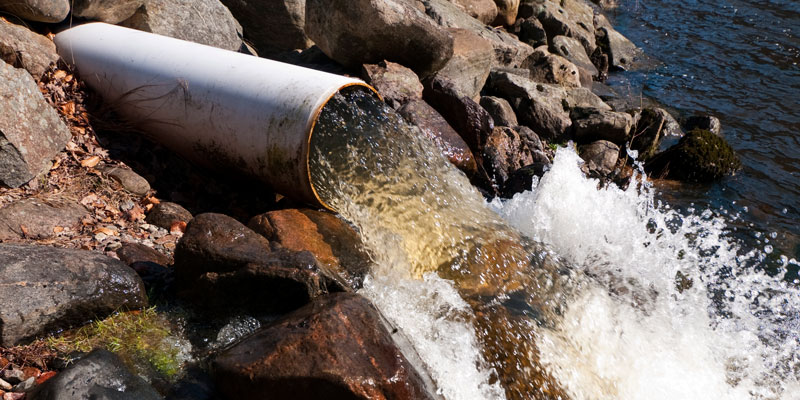Hydrodynamic Particle Breaking for Improved Disinfection
Principal Investigator - Steven Liss, Professor, Vice-Principal (Research), Queen's University, 2009 - 2011

Challenge
Ultraviolet (UV) disinfection technology is used in the wastewater industry around the world to destroy pathogens (viruses and bacteria) in wastewater. However, fine particles clumped together, otherwise known as flocs, protect pathogens from UV photons, posing a significant threat to environmental and human health. This clumping makes it harder to access the pathogens because they are essentially protected from UV photons. Breaking up flocs by changing the force of liquids is an alternative method to improve UV disinfection performance; however, very little is known about the structural characteristics of particles and their impact on hydrodynamic assisted disinfection. There is also a poor understanding of how floc structure and composition, microbial speciation and associations influence particle breakage and disinfection performance. In order for municipal water utilities to ensure that their effluent meets water quality criteria, a more fundamental understanding of particle structural characteristics and their impact on hydrodynamic disruption is needed.
The main objective of this project, led by Dr. Steven Liss, is the development of a novel water treatment technology by integrating hydrodynamic particle disruption with existing UV technology.
Project
The development of a novel UV hydrodynamic disinfection system research program involves a combination of laboratory studies, pilot scale studies at the Wastewater Technology Centre in Ontario, and computer modelling. Laboratory studies are focusing on pathogen-particle associations and disinfection performance. Data collected in these experiments are being used to develop robust computer models based on computational fluid dynamics (CFD), using algorithms and mathematical formulas to analyze how fluids’ flow. The pilot scale studies focus on scale-up and design optimization of extensional flows.
Preliminary results indicate that hydrodynamic treatment decreased the viability of bacteria associated with large flocs and also increased the ultraviolet (UV) dose response. For the successful implementation of the hydrodynamic disinfection technology, it has also been determined that it is necessary to identify the optimum hydrodynamic flow conditions that provide maximum enhancement in UV disinfection performance. It was also observed that the cost of hydrodynamic treatment is directly related to the efficiency of the pump used to create the flow. A key finding is that the energy required to operate water pumps for hydrodynamic treatment is an order of magnitude less than the energy required to operate traditional pumps (pump efficiency of 5% relative to 60% for traditional pumps).
Overall, the results show that hydrodynamic disinfection has the potential to provide a simple, low cost, compact and robust technology to make suspended aggregates more amenable to UV disinfection.
Outputs
- Developing an innovative treatment system that integrates hydrodynamic particle disruption with existing UV technology (HD-UV Disinfection Process).
- Developing a simulation of particle breakage through an orifice using Fluent, a commercial computational fluid dynamics software. This component is in partnership with the CFD team at Trojan Technologies.
- Partners met on a regular basis to collaborate. Meetings involved the entire team of investigators, students, research associates and other collaborators, along with representatives from industry partners (Ministry of Environment, Environment Canada and Trojan Technology).
Outcomes
- The successful development of this low cost treatment technology will potentially increase the effective operating range of current UV technology, which in turn will increase the number and types of wastewater effluents that can be effectively regulated.
- With further research and development, the UV hydrodynamic disinfectant method will be a cost-effective alternative to full-flow particle removal by filtration or membrane treatment, with significantly lower capital costs, smaller footprint, no sludge generation, and easier retrofitting.
- While there are no immediate plans to develop a full-scale system, the project team intends to continue working with the partners to advance the research.
- Additionally, this project helped train two graduate students, creating more highly qualified personnel in the field.




